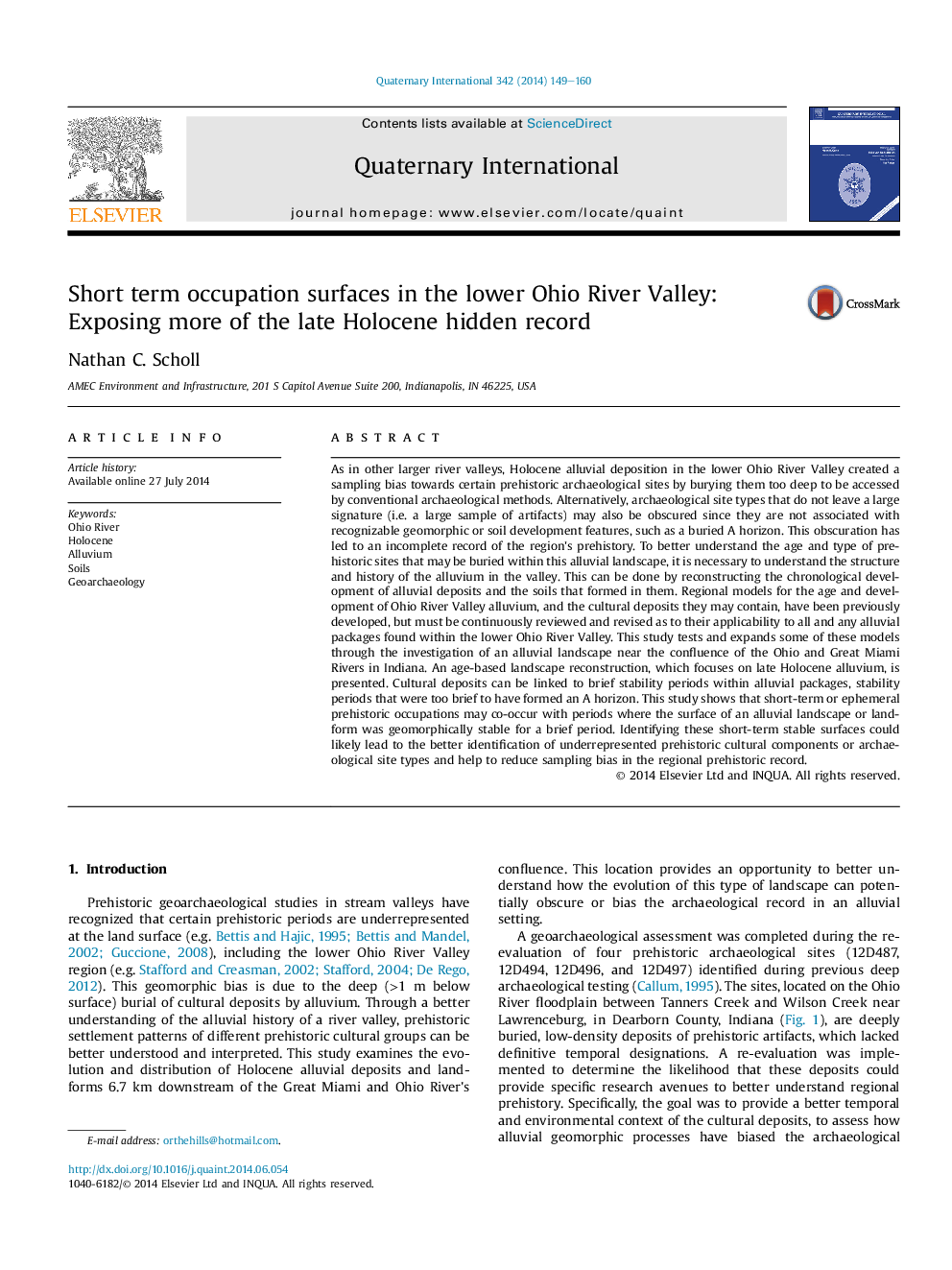| کد مقاله | کد نشریه | سال انتشار | مقاله انگلیسی | نسخه تمام متن |
|---|---|---|---|---|
| 1041569 | 1484154 | 2014 | 12 صفحه PDF | دانلود رایگان |
As in other larger river valleys, Holocene alluvial deposition in the lower Ohio River Valley created a sampling bias towards certain prehistoric archaeological sites by burying them too deep to be accessed by conventional archaeological methods. Alternatively, archaeological site types that do not leave a large signature (i.e. a large sample of artifacts) may also be obscured since they are not associated with recognizable geomorphic or soil development features, such as a buried A horizon. This obscuration has led to an incomplete record of the region's prehistory. To better understand the age and type of prehistoric sites that may be buried within this alluvial landscape, it is necessary to understand the structure and history of the alluvium in the valley. This can be done by reconstructing the chronological development of alluvial deposits and the soils that formed in them. Regional models for the age and development of Ohio River Valley alluvium, and the cultural deposits they may contain, have been previously developed, but must be continuously reviewed and revised as to their applicability to all and any alluvial packages found within the lower Ohio River Valley. This study tests and expands some of these models through the investigation of an alluvial landscape near the confluence of the Ohio and Great Miami Rivers in Indiana. An age-based landscape reconstruction, which focuses on late Holocene alluvium, is presented. Cultural deposits can be linked to brief stability periods within alluvial packages, stability periods that were too brief to have formed an A horizon. This study shows that short-term or ephemeral prehistoric occupations may co-occur with periods where the surface of an alluvial landscape or landform was geomorphically stable for a brief period. Identifying these short-term stable surfaces could likely lead to the better identification of underrepresented prehistoric cultural components or archaeological site types and help to reduce sampling bias in the regional prehistoric record.
Journal: Quaternary International - Volume 342, 25 August 2014, Pages 149–160
